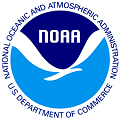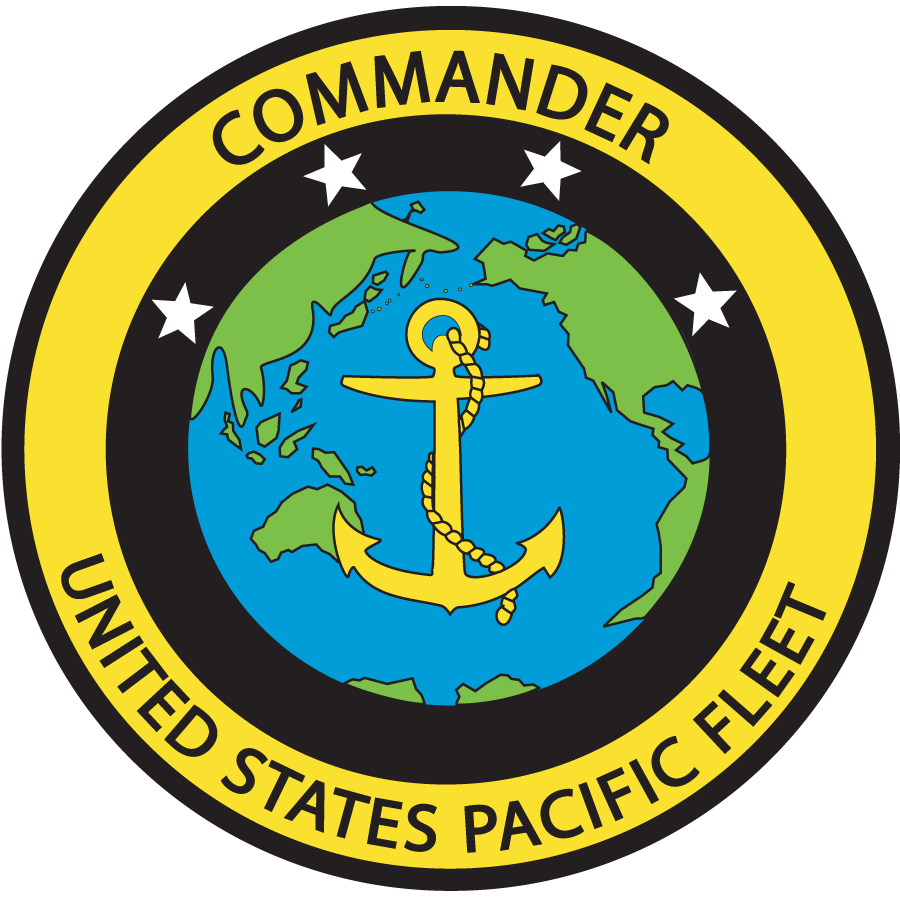Abstract




To ensure compliance with United States regulations including the Endangered Species Act (ESA), the Marine Mammal Protection Act (MMPA), the National Environmental Policy Act (NEPA), and Executive Order (EO) 12114 (Environmental Effects Abroad of Major Federal Actions), the U.S. Navy takes responsibility for reviewing and evaluating the potential environmental impacts of conducting at-sea training and testing operations. All marine mammals in the United States are protected under the MMPA, and some species receive additional protection under the ESA. As stipulated by the MMPA and ESA, information on the potential location and numbers of protected marine species is required in order to estimate how many animals that might be affected by a specific activity. The Navy performs quantitative analyses to estimate the number of marine mammals and sea turtles that could be affected by at-sea training and testing activities. A key element of this quantitative impact analysis is knowledge of the abundance and concentration (density — the number of individual animals found per square kilometer of area) of the species in specific areas where those activities will occur. Species distribution models are now widely used in conservation and management to predict suitable habitat for protected marine species and to assess risks of effects from human activities. These models estimate density as a continuous function of habitat variables (e.g., sea surface temperature, seafloor depth, etc.) and thus allow predictions of species densities on finer spatial scales than traditional design-based line-transect analysis methods, which generally provide a single estimate of species density for a broad geographic area. Both model- and design-based methods are generally used to estimate density for cetaceans. The methods used to estimate pinniped at-sea densities are typically different than those used for cetaceans, because pinnipeds are not limited to the water and spend a significant amount of time on land (e.g., at rookeries). Pinniped abundance is generally estimated via shore counts of animals on land at known haul-out sites or by counting number of pups weaned at rookeries and applying a correction factor to estimate the abundance of the population. Methods to estimate sea turtle density vary by species and region, and include counting nesting individuals or the number of eggs in nests, using information from tagging studies, or where data permit, using designed-based methods. The U.S. Navy's Pacific 3rd and 7th Fleet's Area of Responsibility includes the Hawaii-Southern California Training and Testing (HSTT) Study Area, the Mariana Islands Training and Testing (MITT) Study Area, the Northwest Training and Testing (NWTT) Study Area, and the Gulf of Alaska (GOA) Temporary Maritime Activities Area (TMAA) Study Area. These study areas include one of the most heavily surveyed regions in the world (the California Current Ecosystem), a fairly well-surveyed region within the U.S. Exclusive Economic Zone of the Hawaiian Islands, a broad region within the Gulf of Alaska where the majority of offshore survey data are from two Navy-funded ship surveys, as well as a large region of the western North Pacific where the Navy conducted the first comprehensive marine mammal survey in 2007. Consequently, there is no single source of density data for every area, species, and season. For each marine mammal and sea turtle species present in these study areas, the Navy uses the best available region- and species-specific density data to support their quantitative impact analyses. The Navy produces region-specific reports that describe the modeling decisions made for each species, and includes density maps for each species and season as available. Citations for the majority of the cetacean density estimates are included below; please refer to the Navy's Marine Species Density Database Technical Reports for complete lists of all references used to develop density estimates for all species in the various study areas.
This website allows you to download the density maps for each taxon in GIS-compatible raster format along with maps that estimate the statistical uncertainty (if available) in the density estimates.
Citations
Citations for the majority of the cetacean density estimates. Please refer to the Navy's Marine Species Density Database technical reports for complete lists of all references used to develop density estimates for all species in the various study areas.
Barlow J (2016) Cetacean abundance in the California Current estimated from ship-based line-transect surveys in 1991Đ2014. NOAA Administrative Report LJ-16-01. La Jolla, CA, USA. National Marine Fisheries Service.
Becker EA, Carretta JV, Forney KA, Barlow J, Brodie S, Hoopes R, Jacox MG Maxwell SM, Redfern JV, Sisson NB, Welch H, Hazen EL (2020) Performance evaluation of cetacean species distribution models developed using generalized additive models and boosted regression trees. Ecology and Evolution 2020;00:1Đ28. https://doi.org/10.1002/ece3.6316
Becker EA, Forney KA, Thayre BJ, Debich AJ, Campbell GS, Whitaker K, Douglas AB, Gilles A, Hoopes R, Hildebrand JA (2017) Habitat-based density models for three cetacean species off Southern California illustrate pronounced seasonal differences. Frontiers in Marine Science 4:121. https://doi.org/10.3389/fmars.2017.00121
Bradford AL, Forney KA, Oleson EM, Barlow J (2017) Abundance estimates of cetaceans from a line-transect survey within the U.S. Hawaiian Islands Exclusive Economic Zone. Fishery Bulletin. 115:129-142.
Campbell GS, Thomas L, Whitaker K, Douglas AB, Calamboikdis J, Hildebrand JA (2015) Inter-annual and seasonal trends in cetacean distribution, density and abundance off Southern California. Deep-Sea Research Part II 112:143Đ157.
Forney KA, Becker EA, Foley DG, Barlow J, Oleson EM (2015) Habitat-based models of cetacean density and distribution in the central North Pacific. Endangered Species Research 27: 1-20.
Fulling GL, Thorson PH, Rivers J (2011) Distribution and Abundance Estimates for Cetaceans in the Waters off Guam and the Commonwealth of the Northern Mariana Islands. Pacific Science, 65(3), 321Đ343.
Rone BK, Zerbini AN, Douglas AB, Weller DW, Clapham PJ (2017) Abundance and distribution of cetaceans in the Gulf of Alaska. Marine Biology 164:23. https://doi.org/10.1007/s00227-016-3052-2
Density Mapper

Species and Populations in the Mapper
The mapper can also be launched with a focus on a specific population from the species list below.
| Abbreviation | Region |
|---|---|
| HSTT | Hawaii-Southern California Training and Testing Study Area |
| MITT | Mariana Islands Training and Testing Study Area |
| NWTT | Northwest Training and Testing Study Area |
| GOA TMAA | Gulf of Alaska Temporary Maritime Activities Area |
Baleen whales
| Scientific name | Common name | Region |
|---|---|---|
| Balaenoptera acutorostrata | Minke whale | NWTT_Behm, HSTT_Hawaii, GOA, NWTT_Inland, HSTT_SOCAL, MITT, NWTT_Offshore |
| Balaenoptera borealis | Sei whale | HSTT_Hawaii, GOA, HSTT_SOCAL, MITT, NWTT_Offshore |
| Balaenoptera brydei | Brydes whale | HSTT_Hawaii, MITT, HSTT_SOCAL |
| Balaenoptera musculus | Blue whale | HSTT_Hawaii, GOA, HSTT_SOCAL, MITT, NWTT_Offshore |
| Balaenoptera physalus | Fin whale | NWTT_Behm, HSTT_Hawaii, GOA, HSTT_SOCAL, MITT, NWTT_Offshore |
| Eschrichtius robustus | Gray whale | GOA, HSTT_SOCAL, NWTT_Inland, NWTT_Offshore |
| Eubalaena japonica | North Pacific right whale | GOA |
| Megaptera novaeangliae | Humpback whale | NWTT_Behm, HSTT_Hawaii, GOA, NWTT_Inland, HSTT_SOCAL, MITT, NWTT_Offshore |
Beaked and sperm whales
| Scientific name | Common name | Region |
|---|---|---|
| Berardius bairdii | Bairds beaked whale | GOA, HSTT_SOCAL, NWTT_Offshore |
| Indopacetus pacificus | Longmans beaked whale | HSTT_Hawaii, MITT |
| Kogia breviceps | Pygmy sperm whale | HSTT_Hawaii, MITT |
| Kogia sima | Dwarf sperm whale | HSTT_Hawaii, MITT |
| Mesoplodon densirostris | Blainvilles beaked whale | HSTT_Hawaii, MITT |
| Mesoplodon stejnegeri | Stejnegers beaked whale | GOA |
| Physeter macrocephalus | Sperm whale | HSTT_Hawaii, GOA, HSTT_SOCAL, MITT, NWTT_Offshore |
| Ziphius cavirostris | Cuviers beaked whale | HSTT_Hawaii, GOA, MITT |
| Ziphius cavirostris/Mesoplodon spp. | Small beaked whales | HSTT_SOCAL, NWTT_Offshore |
Large delphinoids
| Scientific Name | Common Name | Region |
|---|---|---|
| Pseudorca crassidens | False killer whale | MITT |
| Pseudorca crassidens | False killer whale - Hawaii Pelagic and Northwestern Hawaiian Islands stocks | HSTT_Hawaii |
| Pseudorca crassidens | False killer whale - MHI Insular | HSTT_Hawaii |
| Orcinus orca | Killer whale | GOA, HSTT_Hawaii, HSTT_SOCAL, MITT |
| Orcinus orca | Killer whale - offshore | NWTT_Behm, NWTT_Offshore |
| Orcinus orca | Killer whale - resident | NWTT_Behm |
| Orcinus orca | Killer whale - southern resident | NWTT_Inland, NWTT_Offshore |
| Orcinus orca | Killer whale - transient | NWTT_Behm, NWTT_Inland |
| Peponocephala electra | Melon-headed whale | MITT |
| Peponocephala electra | Melon-headed whale - Hawaiian Islands | HSTT_Hawaii |
| Peponocephala electra | Melon-headed whale - Kohala Resident | HSTT_Hawaii |
| Feresa attenuata | Pygmy killer whale | HSTT_Hawaii, HSTT_SOCAL, MITT |
| Grampus griseus | Rissos dolphin | HSTT_Hawaii, HSTT_SOCAL, MITT, NWTT_Offshore |
| Globicephala macrorhynchus | Short-finned pilot whale | HSTT_Hawaii, HSTT_SOCAL, MITT, NWTT_Offshore |
Small delphinoids
| Scientific name | Common name | Region |
|---|---|---|
| Delphinus capensis | Long-beaked common dolphin | HSTT_SOCAL, NWTT_Offshore |
| Delphinus delphis | Short-beaked common dolphin | HSTT_SOCAL, NWTT_Offshore |
| Lagenodelphis hosei | Frasers dolphin | HSTT_Hawaii, MITT |
| Lagenorhynchus obliquidens | Pacific white-sided dolphin | NWTT_Behm, GOA, NWTT_Inland, HSTT_SOCAL, NWTT_Offshore |
| Lissodelphis borealis | Northern right whale dolphin | HSTT_SOCAL, NWTT_Offshore |
| Stenella attenuata | Pantropical spotted dolphin | MITT |
| Stenella attenuata | Pantropical spotted dolphin - 4 Islands | HSTT_Hawaii |
| Stenella attenuata | Pantropical spotted dolphin - Hawaii Island | HSTT_Hawaii |
| Stenella attenuata | Pantropical spotted dolphin - Hawaii Pelagic | HSTT_Hawaii |
| Stenella attenuata | Pantropical spotted dolphin - Oahu | HSTT_Hawaii |
| Stenella coeruleoalba | Striped dolphin | HSTT_Hawaii, MITT, HSTT_SOCAL, NWTT_Offshore |
| Stenella longirostris | Spinner dolphin | MITT |
| Stenella longirostris | Spinner dolphin - Hawaii Island | HSTT_Hawaii |
| Stenella longirostris | Spinner dolphin - Hawaii pelagic | HSTT_Hawaii |
| Stenella longirostris | Spinner dolphin - Kauai Niihau | HSTT_Hawaii |
| Stenella longirostris | Spinner dolphin - Oahu 4 Islands | HSTT_Hawaii |
| Steno bredanensis | Rough-toothed dolphin | HSTT_Hawaii, MITT |
| Tursiops truncatus | Bottlenose dolphin | HSTT_SOCAL, MITT, NWTT_Offshore |
| Tursiops truncatus | Bottlenose dolphin - 4 Islands Region | HSTT_Hawaii |
| Tursiops truncatus | Bottlenose dolphin - California coastal stock | HSTT_SOCAL |
| Tursiops truncatus | Bottlenose dolphin - Hawaii Island | HSTT_Hawaii |
| Tursiops truncatus | Bottlenose dolphin - Hawaii Pelagic | HSTT_Hawaii |
| Tursiops truncatus | Bottlenose dolphin - Kauai and Niihau | HSTT_Hawaii |
| Tursiops truncatus | Bottlenose dolphin - Oahu | HSTT_Hawaii |
Porpoises
| Scientific name | Common name | Region |
|---|---|---|
| Phocoena phocoena | Harbor porpoise | GOA, NWTT_Offshore, NWTT_Inland, NWTT_Behm |
| Phocoenoides dalli | Dalls porpoise | NWTT_Behm, GOA, NWTT_Inland, HSTT_SOCAL, NWTT_Offshore |
Sea turtles
| Scientific Name | Common Name | Region |
|---|---|---|
| Chelonia mydas | Green sea turtle - ApraHarbor | MITT |
| Chelonia mydas | Green sea turtle - CNMINearshore | MITT |
| Chelonia mydas | Green sea turtle - GuamNearshore | MITT |
| Chelonia mydas | Green sea turtle - Offshore | MITT |
| Chelonia mydas | Green sea turtle - SDBay | HSTT_SOCAL |
| Eretmochelys imbricata | Hawksbill turtle - ApraHarbor | MITT |
| Eretmochelys imbricata | Hawksbill turtle - CNMINearshore | MITT |
| Eretmochelys imbricata | Hawksbill turtle - GuamNearshore | MITT |
| Eretmochelys imbricata | Hawksbill turtle - Offshore | MITT |
| Dermochelys coriacea | Leatherback sea turtle | GOA, MITT, NWTT_Offshore |
| Caretta caretta | Loggerhead turtle | MITT |
| Chelonia mydas/Eretmochelys imbricata | Sea turtles - Nearshore | HSTT_Hawaii |
| Chelonia mydas/Eretmochelys imbricata | Sea turtles - Offshore | HSTT_Hawaii |
Seals and Sea lions
| Scientific name | Common name | Region |
|---|---|---|
| Arctocephalus townsendi | Guadalupe fur seal | HSTT_SOCAL, NWTT_Offshore |
| Callorhinus ursinus | Northern fur seal | GOA, HSTT_SOCAL, NWTT_Offshore, NWTT_Behm |
| Eumetopias jubatus | Steller sea lion | GOA, NWTT_Offshore, NWTT_Inland, NWTT_Behm |
| Histriophoca fasciata | Ribbon seal | GOA |
| Mirounga angustirostris | Northern elephant seal | NWTT_Behm, GOA, NWTT_Inland, HSTT_SOCAL, NWTT_Offshore |
| Monachus schauinslandi | Hawaiian monk seal - Nearshore | HSTT_Hawaii |
| Monachus schauinslandi | Hawaiian monk seal - Offshore | HSTT_Hawaii |
| Phoca vitulina | Harbor seal | NWTT_Behm, GOA, NWTT_Inland, HSTT_SOCAL, NWTT_Offshore |
| Zalophus californianus | California sea lion | GOA, HSTT_SOCAL, NWTT_Inland, NWTT_Offshore |
| Zalophus californianus | California sea lion - SDBay | HSTT_SOCAL |
ACKNOWLEDGMENTS
The density data incorporated into the Density Mapper came from multiple scientists working in study areas throughout the Pacific and Gulf of Alaska. Density estimates would not exist without the dedication of the marine mammal and sea turtle observers, principal investigators, and survey crews who worked hard collecting the data used to derive the density estimates included here. We thank them and the many study area experts and Navy biologists who provided input on these data and analyses. Funding for this project was provided by the Navy, Commander, U.S. Pacific Fleet and by the National Oceanic and Atmospheric Administration (NOAA), National Marine Fisheries Service (NMFS), Southwest Fisheries Science Center (SWFSC), and the Bureau of Ocean Energy Management (BOEM).







